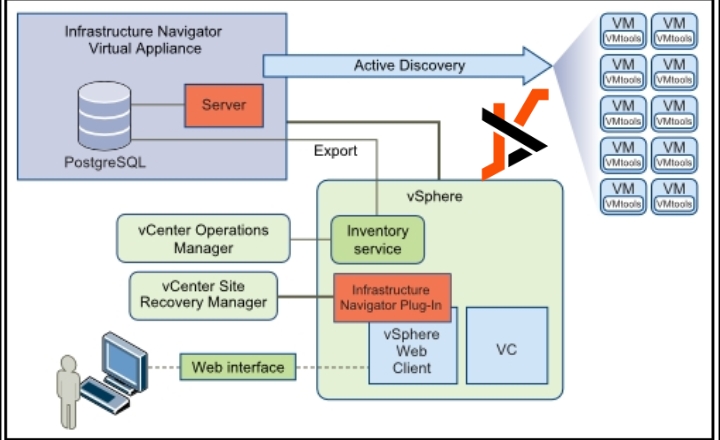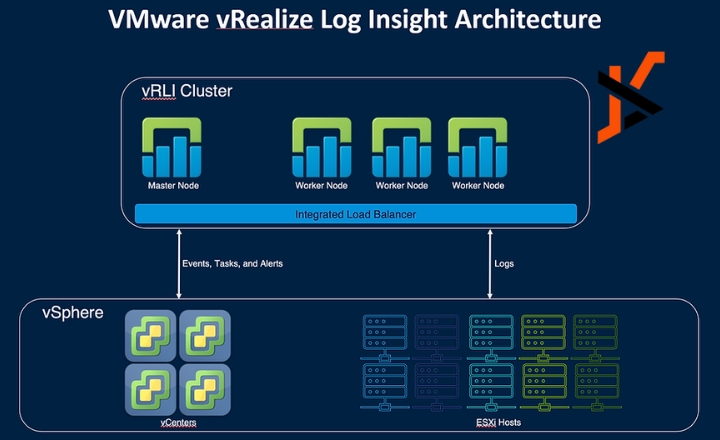In the rapidly evolving landscape of IT management and virtualization, organizations are increasingly relying on sophisticated tools to optimize their infrastructures. One such tool that has gained significant attention is vRealize Infrastructure Navigator.
This powerful solution provides deep insights into virtual environments, enabling administrators to manage resources more efficiently. In this article, we will explore what vRealize Infrastructure Navigator is, its key features, benefits, and how it fits into the broader context of cloud management and virtualization.
vRealize Infrastructure Navigator
vRealize Infrastructure Navigator is part of VMware’s vRealize Suite, a comprehensive cloud management platform designed to simplify the management of hybrid and multi-cloud environments. This tool specifically focuses on providing visibility into the infrastructure layer of virtual environments, allowing IT teams to understand the relationships between virtual machines (VMs), applications, and the underlying hardware.
The primary goal of vRealize Infrastructure Navigator is to provide a clear, graphical representation of the virtual infrastructure. This includes detailed mapping of VMs, their dependencies, and performance metrics, enabling administrators to make informed decisions about resource allocation and optimization.
Key Features of vRealize Infrastructure Navigator
vRealize Infrastructure Navigator comes equipped with a variety of features that enhance its functionality and usability. Some of the standout features include:
- Dependency Mapping: One of the core functionalities of vRealize Infrastructure Navigator is its ability to visualize dependencies among VMs, applications, and physical resources. This feature helps administrators to understand how different components interact, making it easier to troubleshoot issues and optimize performance.
- Performance Monitoring: The tool provides real-time performance metrics, allowing administrators to monitor the health and performance of their virtual infrastructure. This capability ensures that any performance bottlenecks can be identified and addressed promptly.
- Capacity Planning: vRealize Infrastructure Navigator assists in capacity planning by providing insights into resource utilization trends. Administrators can assess current resource usage and forecast future needs, enabling proactive management of the infrastructure.
- Integrated Management: As part of the vRealize Suite, vRealize Infrastructure Navigator integrates seamlessly with other VMware management tools. This integration allows for a cohesive management experience across the cloud environment, enhancing efficiency and reducing administrative overhead.
The Benefits of Using vRealize Infrastructure Navigator

One of the most significant advantages of using vRealize Infrastructure Navigator is the enhanced visibility it offers into the virtual environment. By providing a clear graphical representation of the infrastructure, administrators can quickly identify issues, dependencies, and resource utilization patterns.
- Improved Troubleshooting: With clear mapping of dependencies, troubleshooting becomes more straightforward. Administrators can trace issues back to their root causes, reducing downtime and improving service levels. For instance, if an application is experiencing performance issues, the dependency map can help identify whether the problem lies with a specific VM or the underlying hardware.
- Proactive Management: The visibility provided by vRealize Infrastructure Navigator allows for proactive infrastructure management. By monitoring performance metrics and resource usage trends, administrators can anticipate potential problems before they escalate, ensuring a more reliable and efficient IT environment.
Streamlined Resource Allocation
Efficient resource allocation is critical in today’s dynamic IT landscape, where workloads can change rapidly. vRealize Infrastructure Navigator provides insights that help organizations allocate resources more effectively.
- Capacity Planning: By analyzing historical data on resource usage, administrators can make informed decisions about capacity planning. This capability helps ensure that resources are available when needed, preventing bottlenecks and optimizing performance.
- Cost Efficiency: Effective resource allocation also translates into cost savings. Organizations can avoid over-provisioning resources, which leads to unnecessary expenses. By using the insights provided by vRealize Infrastructure Navigator, businesses can optimize their cloud spend and allocate resources based on actual needs.
Integrating vRealize Infrastructure Navigator into Your IT Strategy
As organizations increasingly adopt cloud strategies, tools like vRealize Infrastructure Navigator play a crucial role in ensuring that these strategies are implemented effectively. The integration of this tool within a broader cloud management framework enhances the overall management capabilities of IT teams.
- Hybrid Cloud Management: vRealize Infrastructure Navigator is particularly valuable in hybrid cloud environments, where organizations need to manage resources across both on-premises and cloud infrastructures. The tool provides a unified view of resources, enabling administrators to make decisions that align with the organization’s overall cloud strategy.
- Integration with Other VMware Solutions: As part of the vRealize Suite, vRealize Infrastructure Navigator integrates seamlessly with other VMware products such as vRealize Operations and vRealize Automation. This integration allows for a comprehensive approach to cloud management, where insights from one tool can inform decisions in another, creating efficiencies across the board.
Best Practices for Implementation
To maximize the benefits of vRealize Infrastructure Navigator, organizations should consider the following best practices during implementation:
- Define Clear Objectives: Before deploying vRealize Infrastructure Navigator, organizations should define clear objectives for what they hope to achieve. Whether it’s improving performance monitoring, enhancing capacity planning, or optimizing resource allocation, having specific goals can guide the implementation process.
- Training and Engagement: Ensuring that IT staff are adequately trained on how to use vRealize Infrastructure Navigator is essential for successful implementation. Engaging users in the process can lead to better adoption and utilization of the tool’s features.
- Regular Review and Optimization: After implementation, organizations should regularly review the insights provided by vRealize Infrastructure Navigator and optimize their strategies accordingly. Continuous improvement is key to maximizing the value derived from the tool.
Real-World Applications of vRealize Infrastructure Navigator

To illustrate the effectiveness of vRealize Infrastructure Navigator, consider a large enterprise that struggled with performance issues across its virtual infrastructure. The IT team implemented the tool to gain insights into their environment.
- Identifying Bottlenecks: Through the dependency mapping feature, the team quickly identified several VMs that were heavily overloaded, causing performance degradation for critical applications. By reallocating resources and optimizing the configuration of these VMs, the team was able to reduce latency significantly.
- Enhanced Capacity Planning: The organization also leveraged the capacity planning features of vRealize Infrastructure Navigator to forecast future resource needs. This proactive approach enabled the IT team to prepare for upcoming projects without over-provisioning resources, ultimately resulting in cost savings.
Conclusion
In conclusion, vRealize Infrastructure Navigator is a robust tool that provides essential insights into virtual infrastructures. By offering features such as dependency mapping, performance monitoring, and capacity planning, it enables organizations to optimize their IT environments effectively. The visibility and control gained from using this tool enhance troubleshooting, streamline resource allocation, and support proactive management strategies.
As organizations continue to embrace cloud technologies and hybrid environments, the importance of tools like vRealize Infrastructure Navigator will only grow. By integrating this solution into their IT strategies and following best practices for implementation, organizations can unlock the full potential of their virtual infrastructures, driving efficiency and innovation in today’s fast-paced digital landscape.

